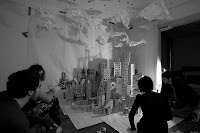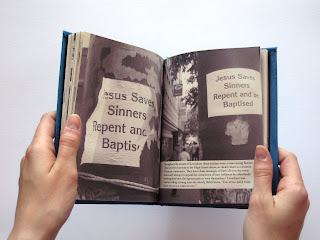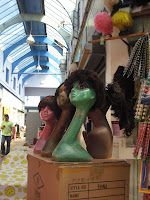We're planning a collaborative project that will rely mainly on hand-generated production. Our collective view was that we favoured the idea of building and constructing, on any scale, for this brief, and this theme should underpin the designs we came up with at the outset.
PAPER CITYThe original concept was to construct a purely paper city, a scale model of either a known or an invented metropolis; we would film its construction and then destroy it somehow, to the soundtrack of members of the public talking about their concern for the future of the city. The model is exemplified by this installation produced for the cover of an album by 'The Non', the progress of which is tracked
here.


 TRICK
TRICKWe then thought of creating everyday objects out of plain white paper, life-size, then placing them in the urban arena and filming them. They would look out of place due to their colour, yet appropriately scaled and suited to their location. This was inspired by the work of
Peter Callesen, a strange genius with too much free time who can make anything out of paper.
Regard.
 CUT OUT
CUT OUTThe third and so far strongest idea lends itself most successfully to the moving image brief. After seeing the album artwork for 'Destination Anywhere' by Wheel, we had the idea of creating sets and characters in the 3D cut-and-paste style adopted by
Viveletuning.



We could animate cut-out characters literally moving through the layers of the city. We could record sounds from around London appropriate to the sets in the animation, play with lighting for different moods and basic effects like panning shots, stop-motion etc. We could use AfterEffects to extend the boundaries of the city and assist with the animation techniques, but the emphasis would be on physically moving the components ourselves.


















































